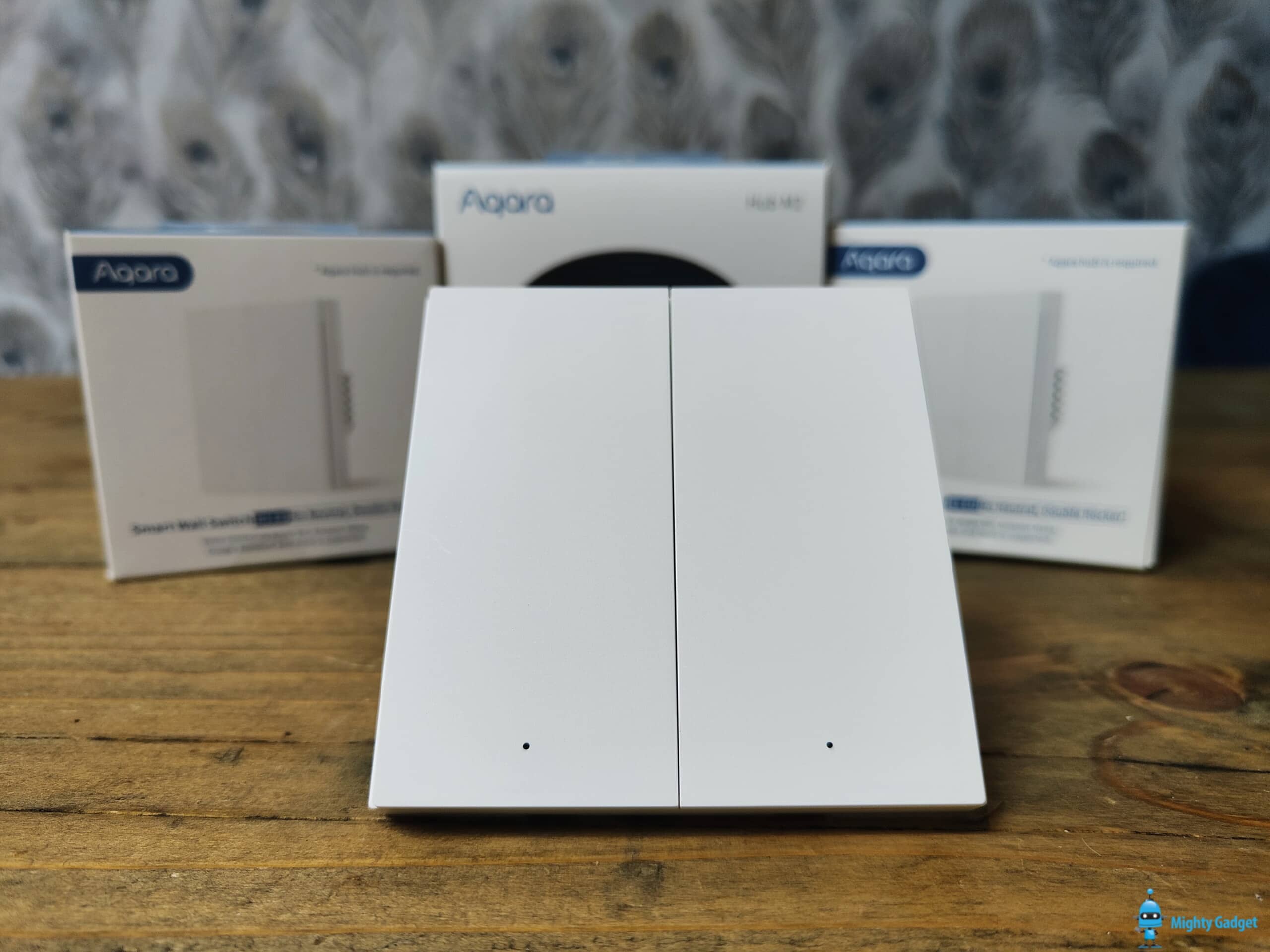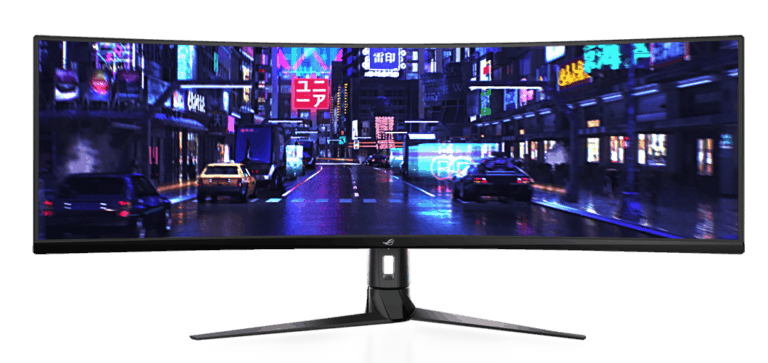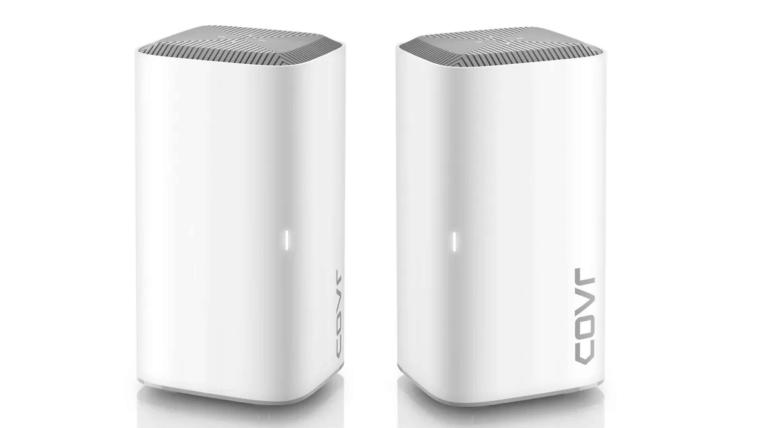Any links to online stores should be assumed to be affiliates. The company or PR agency provides all or most review samples. They have no control over my content, and I provide my honest opinion.
Traditional UK wiring did not run the neutral wire to the light switch. Typically, only the live (and switched live) wire would run to the switch, while the neutral wire would be present only at the light fitting and at the consumer unit (fuse box or circuit breaker panel).
In recent years, there’s been a shift toward running a neutral wire to light switches, primarily to accommodate smart switches and other devices that require a neutral wire to function correctly. This has been a relatively recent development, happening broadly within the last decade or so.
It used to be reasonably difficult to find a smart light switch that did not require a neutral wire. But, in recent years, a large number of options have been launched, giving UK homeowners an easier way to upgrade to smart lighting.
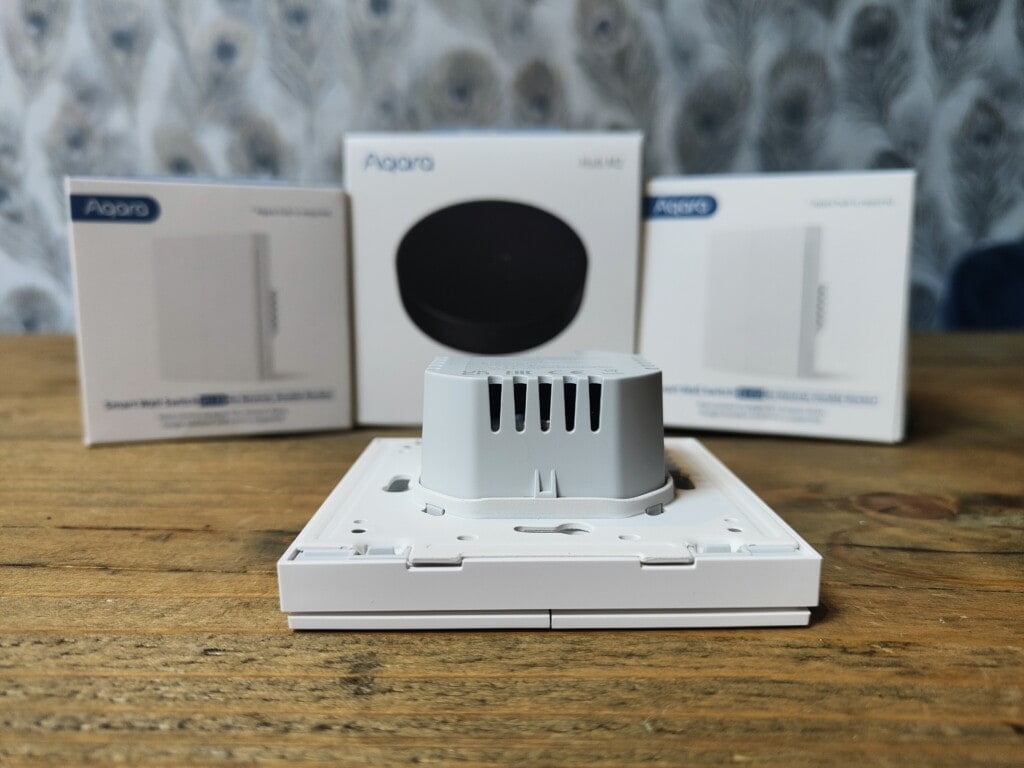
One consideration you need to factor in when buying a smart switch is that they take up much more space than traditional light switches. You will likely need deep back boxes or you can buy light switch spacers. Spacers are not the most attractive of solutions, but they are the easiest.
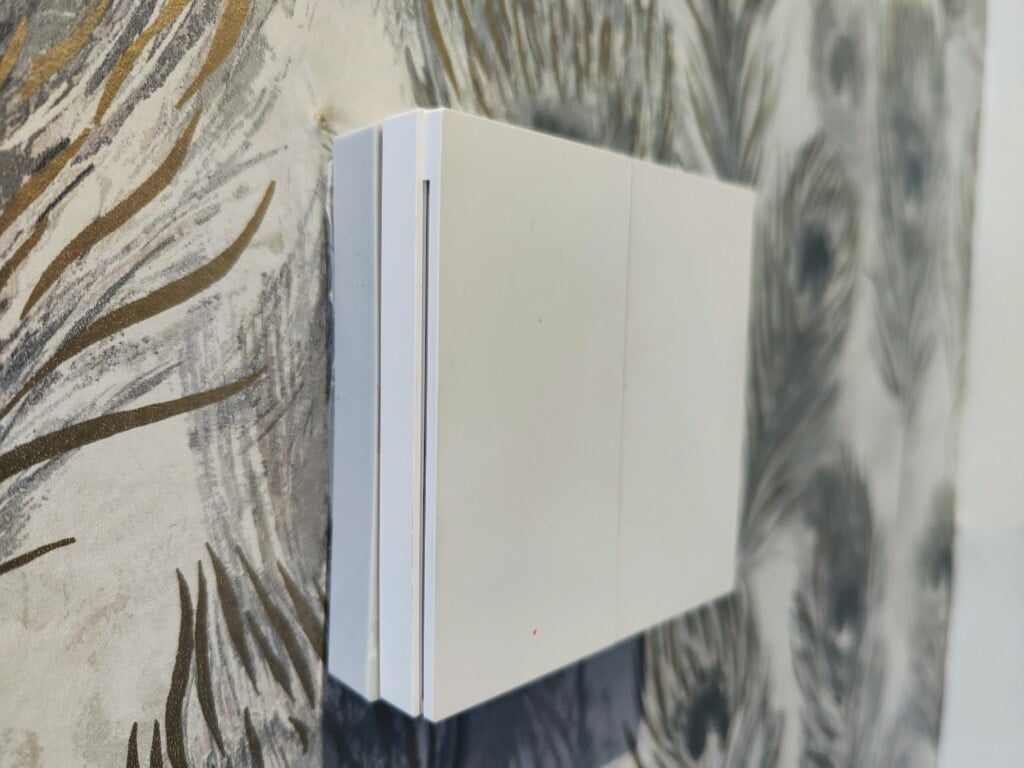
Best No Neutral Smart Light Switches
Aqara Smart Wall Switch H1
| Preview | Product | Rating | Price | |
|---|---|---|---|---|

| Aqara Smart Wall Switch H1 (No Neutral, Single Rocker),... |
£35.99 | Buy on Amazon |
I personally use the Aqara Smart Wall Switch H1 on most of my light switches now, and I, therefore, think this is the best smart light switch.
It uses Zigbee, and you can either pair it up with an Aqara smart hub or use a third-party solution such as Homey.
Sometimes the double rocker is cheaper than the single. You can program the buttons to do whatever you want, they can toggle the electrical switch, or you can map them to do something else.
Tapo S210 / S220 Smart Light Switch
| Preview | Product | Rating | Price | |
|---|---|---|---|---|

| Tapo Smart Light Switch 2 Gang 1 Way, Remote Control,... |
£24.99 | Buy on Amazon |
Tapo launched their smart switches last year, coinciding with the launch of the Tapo H100 smart hub. At less than £20 for the switch, this is probably the best value-for-money smart light switch on the market.
The Tapo H100 smart hub is also only £150, and you can get smart motion sensors for £14. This should mean that Tapo is by far the most affordable solution for smart lighting.
Tapo also has an excellent range of smart bulbs that are affordable. I recently fitted the Tapo L630 bulbs in my bathroom as they were significantly cheaper than Philips Hue. I will quite likely swap out my Aqara smart switch in the bathroom for one of these switches.
MoesGo Tuya ZigBee Smart Light Switch
| Preview | Product | Rating | Price | |
|---|---|---|---|---|

| ZigBee Smart Light Switch, Neutral Wire Optional, Tuya... |
£24.24 | Buy on Amazon |
This is a well-reviewed and affordable smart light switch. This model uses ZigBee, and it states that you need a Tuya Zigbee Hub for it to work. MoesGo sells a Zigbee hub for under £30.
Some reviewers on Amazon have stated they got this to work with HomeAssistant ZHA and an Echo Zigbee hub.
This works with or without the neutral wire.
MoesGo Tuya WiFi Smart Touch Wall Light Switch
| Preview | Product | Rating | Price | |
|---|---|---|---|---|

| MoesGo No Neutral Wire WiFi Smart Touch Wall Light Switch,... | Buy on Amazon |
This is the WiFi version of the previous switch and therefore doesn’t require a separate hub to work as you can control it directly from the Tuya app using WiFi.
The downside to using WiFi is that these use more power than the Zigbee counterparts, and they add congestion to your network. I’d recommend using Zigbee whenever possible.
Candeo Smart Switch LED Dimmer
| Preview | Product | Rating | Price | |
|---|---|---|---|---|

| Candeo Smart Switch LED Dimmer compatible with Philips Hue,... |
£39.99 | Buy on Amazon |
The Candeo smart dimmer is perfect if you are using dimmable dumb LED bulbs. This is an ideal alternative to using the overly expensive smart GU10 bulbs.
It is a Zigbee-based switch, and they state that it works with the Philips Hue Bridge. Though, the dimmer does not work on Hue bulbs. Once installed, the lights can then be remotely controlled with any compatible Hue Dimmer switch, Hue button or Hue remote control.
This has some caveats with the bulbs that you can use. The bulbs need to be dimmable and are a minimum of 5W each, and the total load is a minimum of 10W.
Yagusmart WiFi Smart Wall Light Switch
| Preview | Product | Rating | Price | |
|---|---|---|---|---|

| Yagusmart WiFi Smart Wall Light Switch, No Neutral Wire... |
£18.99 | Buy on Amazon |
This WiFi switch is very affordable and has a lot of reviews with a good overall rating. However, some of the reviews indicate that getting it to work isn’t as easy as the other switches on this list.
People have criticised the poor instructions, and if you don’t use a neutral wire, it looks like you will need to fit the yellow capacitor (supplied) to the ceiling rose on the light fitting.
One review has said that you don’t need to use the app that the QR code leads you to, it will work with TuyaSmart, and they were able to get it to work with Homebridge by running a Raspberry Pi with a plugin called “homebridge-tuya-web v0.1.7”.
Resistor or Capacitor Bypass
Certain smart switches that don’t require a neutral connection may need an auxiliary component, typically referred to as a bypass resistor or capacitor, to function correctly with low-power lights. This factor might increase both your expense and the number of steps in the installation process.
Generally, the manufacturer will specify the least power needed for the switch to work properly and at what level the bypass becomes necessary.
Requirement for Ground Wire
Several smart switches that operate without a neutral connection also demand a ground wire. So, if your electrical box doesn’t have a ground wire, these types of switches are not suitable for your setup.
What are the benefits of a neutral wire?
I will preface this section by stating that I am no electrician, and I have sourced this information from the Internet.
In a typical electrical wiring setup, you will encounter three types of wires: live (hot), neutral, and earth (ground). Some setups, especially in lighting circuits, use a switched live wire, which is the live wire post-switch. Each of these wires serves a unique and crucial function in the electrical circuit:
- Live (Hot) Wire: This wire carries the current from the source (like your breaker panel) to the load (like a light bulb or appliance).
- Neutral Wire: This wire carries the current back to the source after it has passed through the load. This creates a complete circuit for the electricity to flow.
- Earth (Ground) Wire: This is a safety wire that provides a path for the current to flow into the ground in case of a fault, thereby reducing the risk of electric shock.
- Switched Live Wire: This is a live wire that has been routed through a switch. This allows the current to be interrupted (switching off the light, for example) or allowed to pass (switching on the light).
Now, when it comes to benefits:
Live and Switched Live Wires
- They enable the control of an electrical circuit, i.e., switching on and off the appliances or light fixtures, etc.
Neutral Wire
- Enables a complete circuit to be formed for current flow.
- The presence of a neutral wire can allow circuits to be completed even when the switch is off, allowing some devices to have functionality like maintaining digital clock settings, remote control functionality, or, in the case of smart switches, maintaining their network connection.
- With the rise of smart devices, having a neutral wire in switch boxes has become more important, because many of these devices require power to operate their control and communication circuits even when the switch is off. In this case, the device uses the neutral wire to complete a circuit for just its own power.
Should I rewire my lights with a neutral wire?
Whether or not you should rewire your lights to include a neutral wire at the switch depends on your specific needs and circumstances. Here are a few things to consider:
- Smart Switches and Devices: If you plan to install smart switches or other smart devices that require a constant power supply, then yes, having a neutral wire at the switch can be necessary. Many smart switches need the neutral wire to power the communication circuitry even when the switch is off.
- Code Compliance: Some regions’ electrical codes require a neutral wire at each switch location, even if it’s not currently being used. If you’re updating your home’s electrical system, it might be a good idea to add neutral wires to comply with this standard.
- Future-Proofing: Even if you don’t need a neutral wire now, adding one can future-proof your home’s electrical system. As smart home technology becomes more prevalent, having a neutral wire at each switch can make it easier to install new devices in the future.
However, rewiring a home can be a significant undertaking. It can be expensive, time-consuming, and disruptive.
I am James, a UK-based tech enthusiast and the Editor and Owner of Mighty Gadget, which I’ve proudly run since 2007. Passionate about all things technology, my expertise spans from computers and networking to mobile, wearables, and smart home devices.
As a fitness fanatic who loves running and cycling, I also have a keen interest in fitness-related technology, and I take every opportunity to cover this niche on my blog. My diverse interests allow me to bring a unique perspective to tech blogging, merging lifestyle, fitness, and the latest tech trends.
In my academic pursuits, I earned a BSc in Information Systems Design from UCLAN, before advancing my learning with a Master’s Degree in Computing. This advanced study also included Cisco CCNA accreditation, further demonstrating my commitment to understanding and staying ahead of the technology curve.
I’m proud to share that Vuelio has consistently ranked Mighty Gadget as one of the top technology blogs in the UK. With my dedication to technology and drive to share my insights, I aim to continue providing my readers with engaging and informative content.
Last update on 2024-04-28 / Affiliate links / Images from Amazon Product Advertising API

